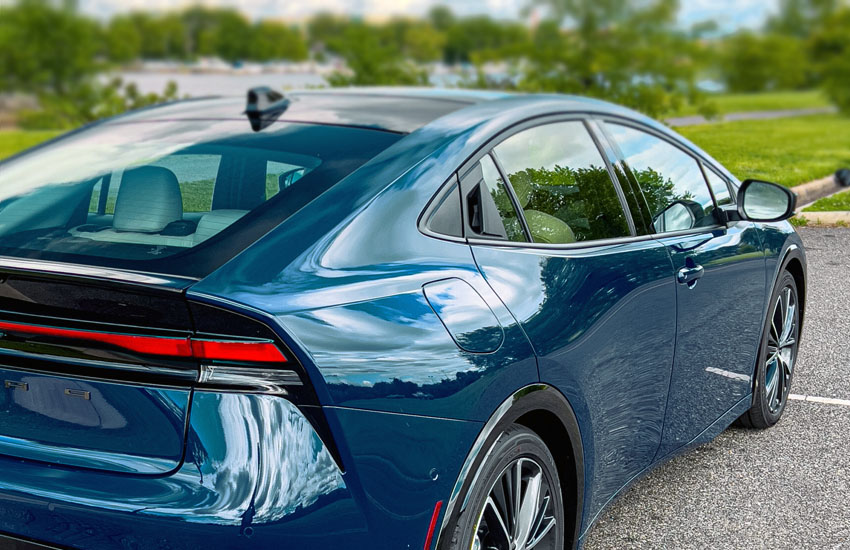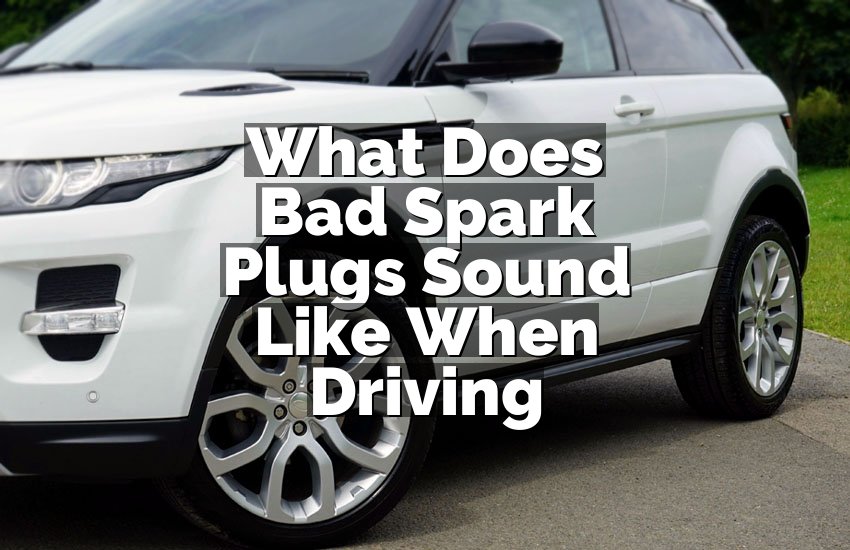You might have noticed your car sitting lower on one side than the other. It’s a common issue that can happen for a few reasons. In this article, we’ll explore what causes this imbalance and what you can do about it.
Whether it’s due to a worn-out suspension, a deflated tire, or something else entirely, understanding the causes can help you address the problem before it gets worse.
By the end, you’ll have a clearer idea of why your car might be leaning to one side and how to fix it. Let’s dive in and get your wheels back on level ground!

Common Causes of a Car Being Lower on One Side
Suspension Issues
When we talk about a car’s suspension, we’re referring to the system that helps the car ride smoothly over bumps and keeps it stable on the road. Sometimes, problems with the suspension can make the car feel bumpy or uneven. Here are some common issues:
1. Worn-Out Springs:
Springs are like big coils that support the weight of the car. Over time, they can get worn out and lose their ability to hold the car up evenly. This can make one side of the car sag lower than the other.
2. Damaged Struts or Shock Absorbers:
Struts and shock absorbers help absorb the bumps and dips in the road. If they get damaged or worn out, they can’t do their job properly. This can lead to the car bouncing more or leaning to one side.
3. Leaky or Low Fluids:
Some suspension systems use fluid to help absorb shocks. If there’s a leak or the fluid level is too low, the suspension won’t work as well. This can cause the car to feel rough or uneven when driving.
4. Bent or Broken Components:
If any part of the suspension system, like control arms or sway bars, gets bent or broken, it can affect how the car sits. This might make one side lower or cause the car to feel unstable.
5. Uneven Tire Wear:
Sometimes, suspension problems can lead to uneven tire wear. If the tires wear down differently on each side, it can make the car sit unevenly.
Getting it Checked:
If you notice your car leaning to one side or feeling bumpy when you drive, it’s important to have a mechanic check the suspension. They can look for these issues and fix them so your car rides smoothly and safely again.
Taking care of your car’s suspension helps it stay comfortable to drive and keeps you safe on the road. If you ever have questions or notice something doesn’t feel right with how your car drives, it’s a good idea to get it checked out.
Uneven Tire Pressure
Tire pressure is like the air inside a balloon—it helps the tires stay firm and support the weight of the car. When the pressure isn’t the same on both sides of the car, it can cause problems:
1. What Happens:
If one tire has more air than the other, that side of the car might sit higher. This can make the car tilt or lean to one side.
2. Why It’s Important:
Having the right tire pressure is crucial for safe driving. When pressures are uneven, it can affect how the car handles and how well it grips the road.
3. Checking Tire Pressure:
To keep things balanced, it’s good to check tire pressure regularly—at least once a month. You can use a tire gauge to measure and adjust the pressure according to what’s recommended in your car’s manual or on a sticker inside the driver’s door.
4. Causes of Uneven Pressure:
Uneven tire pressure can happen if one tire has a slow leak or if there’s been a change in temperature. Driving over rough roads or hitting a curb can also affect tire pressure.
5. Effects on Driving:
When tire pressures are uneven, you might notice the car pulling to one side when you drive. It can also affect fuel efficiency and make tires wear out faster.
Fixing the Problem:
If you find uneven tire pressure, you can add air to the low tire using an air compressor at a gas station or a portable air pump. If you suspect a leak, it’s best to have it checked by a professional to prevent further issues.
Keeping your tires properly inflated not only helps your car drive smoothly but also makes it safer and more efficient on the road.
Damaged Suspension Components
Suspension components are like the bones and joints of a car—they help it move smoothly and handle bumps on the road. When these parts get damaged, it can affect how the car drives:
1. What Happens:
If parts like control arms, bushings, or sway bars get damaged, they can’t support the car properly. This can make the car lean to one side or feel unstable when driving.
2. Causes of Damage:
Damage can happen from hitting potholes, driving over rough terrain, or even from normal wear and tear over time. Extreme weather conditions can also contribute to wear and tear.
3. Signs to Watch For:
You might notice the car bouncing more than usual, especially over bumps. It might also feel like it’s pulling to one side when you drive straight.
4. Effects on Safety:
Damaged suspension components can affect how well the car handles. This could make it harder to control in emergencies or during sudden maneuvers.
5. Getting it Fixed:
If you suspect damage to your suspension, it’s important to have a mechanic check it out. They can inspect the components and replace any parts that are worn out or broken.
Taking care of your car’s suspension helps it stay comfortable and safe to drive. Regular maintenance and quick repairs can prevent bigger problems down the road.
Weight Distribution
When a car sits lower on one side than the other, it’s often due to how weight is distributed inside and on top of the vehicle. Here are some common reasons why this happens:
1. Uneven Loading: Unevenly loading your car can lead to one side sagging. For example, if you consistently carry heavy items like tools or sports gear on one side of the trunk or back seat, it can cause that side to dip lower.
2. Passenger Distribution: Where passengers sit can also affect weight distribution. If more people tend to sit on one side of the car compared to the other, it can cause that side to lower slightly.
3. Cargo Placement: Placing heavier items on one side of the roof rack or in the cargo area without balancing the weight can cause the car to lean on that side.
4. Aftermarket Modifications: Adding aftermarket modifications like larger stereo systems or heavy-duty equipment on one side of the car can disrupt the original weight distribution, causing it to lean.
5. Suspension Wear: Over time, suspension components can wear unevenly or become compressed from repeated use, leading to one side of the car sitting lower than the other.
6. Towing or Hauling: Towing trailers or hauling heavy loads on one side of the vehicle can temporarily or permanently affect its ride height, making it appear uneven.
Checking and Adjusting: To address uneven ride height, it’s important to periodically check and adjust the weight distribution:
- Inspect Loading: Regularly review how you load your car. Try to balance heavy items across both sides and the front and back.
- Adjust Passenger Seating: Encourage passengers to distribute themselves evenly in the car, especially on longer trips.
- Balance Cargo: If using a roof rack or cargo area, distribute weight evenly and avoid overloading one side.
- Monitor Suspension: Keep an eye on your car’s suspension system. If you notice uneven wear or a significant difference in ride height, have it inspected by a mechanic.
Maintaining proper weight distribution not only helps your car sit level and handle better but also ensures safer driving conditions and prolongs the life of your vehicle’s suspension components. Addressing these issues promptly can prevent more significant problems down the road and keep your driving experience smooth and comfortable.
Body or Frame Damage
When a car sits lower on one side than the other, it could be a sign of body or frame damage. Here are some common reasons why this might happen:
1. Collision Impact: If the car has been in a collision, especially on one side, it could cause damage to the body or frame. This damage may not always be visible but can affect how the car sits and handles.
2. Structural Misalignment: A serious accident or even hitting a curb or large pothole can cause the car’s frame to become misaligned. This misalignment can make one side of the car lower or higher than the other.
3. Rust or Corrosion: Over time, rust or corrosion can weaken the car’s body or frame structure. This can lead to sagging or unevenness, especially in areas prone to rusting, like the undercarriage or wheel wells.
4. Age and Wear: As cars age, the structural integrity of the body and frame can weaken. This can cause gradual sagging or uneven settling, making one side of the car lower.
5. Poor Repair Work: Improper repairs after an accident or negligence in addressing minor damages can lead to long-term issues with the car’s structure. This can eventually cause one side to sit lower due to compromised stability.
Identifying and Addressing Issues:
If you suspect body or frame damage as the cause of your car sitting lower on one side, it’s essential to take action:
- Visual Inspection: Look for signs of unevenness or misalignment in the car’s body panels or gaps between doors and frames.
- Professional Assessment: Have a qualified mechanic or body shop inspect the car. They can use specialized tools to measure the frame’s alignment and identify any hidden damage.
- Repair or Replacement: Depending on the severity of the damage, repairs may involve straightening the frame, replacing damaged panels, or treating rusted areas to prevent further deterioration.
Addressing body or frame damage promptly not only restores the car’s appearance but also ensures its structural integrity and safety. By maintaining a well-maintained frame and body, you can prolong your car’s lifespan and enjoy safer driving conditions.
Worn Out or Damaged Shock Absorbers
Shock absorbers are important components of a car’s suspension system that help smooth out bumps and keep the ride comfortable. When shock absorbers wear out or get damaged, it can affect how the car sits and handles:
1. Function of Shock Absorbers:
Shock absorbers, also known as shocks or dampers, control the up-and-down movement of the car’s suspension. They help maintain tire contact with the road and reduce bouncing.
2. Signs of Wear or Damage:
When shock absorbers wear out or are damaged, you may notice:
- Excessive bouncing or swaying when driving over bumps.
- The car leaning or dipping to one side during turns or braking.
- Uneven tire wear, especially if the shock absorbers are not keeping the tires in constant contact with the road.
3. Causes of Wear:
Shock absorbers can wear out over time due to:
- High mileage and regular use.
- Driving on rough or poorly maintained roads.
- Exposure to extreme temperatures or environmental conditions.
4. Effects on Car Height:
If shock absorbers are worn out or damaged, they may not support the weight of the car evenly. This can cause one side of the car to sit lower than the other, affecting its overall stance.
5. Importance of Replacement:
It’s important to replace worn-out or damaged shock absorbers promptly. Driving with faulty shocks not only affects ride comfort and handling but can also lead to increased wear on other suspension components and tires.
Checking and Replacing:
To maintain proper suspension and prevent uneven car height:
- Visual Inspection: Look for signs of oil leaks or physical damage on the shock absorbers.
- Road Test: Notice any changes in ride quality or handling, such as excessive bouncing or instability.
- Professional Evaluation: Have a mechanic inspect the shock absorbers if you suspect issues. They can determine if replacement is needed and ensure the suspension system is in good condition.
By keeping your shock absorbers in good condition, you help ensure a smoother, safer, and more comfortable driving experience while maintaining proper car height and handling.
I hope you found this article helpful in understanding why your car might be lower on one side. It’s usually due to problems with the suspension, like a worn-out spring or a leaking shock absorber.
Sometimes, it could be because of uneven tire pressure or a problem with the wheel alignment. Regular maintenance and quick fixes can prevent these issues from getting worse.
If you notice your car leaning, it’s best to have a professional mechanic check it out to avoid safety risks and further damage. Taking care of your car’s suspension ensures a smoother and safer ride for you.
Frequently Asked Questions
What are some signs that my car might be sitting lower on one side?
You might notice that your car looks tilted to one side, the tires wear unevenly, the steering pulls to one side, or one side of the car is noticeably lower than the other. These signs usually mean there’s a problem with the suspension, weight balance, or maybe damage to the car’s body.
How does uneven tire wear make one side of the car sit lower?
Uneven tire wear happens when the suspension doesn’t hold the car evenly. This could be because the suspension parts are worn out, the wheels aren’t aligned correctly, or the tire pressures aren’t the same on both sides. Regular tire rotations and alignments help keep the suspension working right and prevent uneven wear.
Can hot or cold weather affect how my car sits?
Yes, extreme temperatures can change how suspension parts work. They might expand or contract, which could make the car sit lower on one side temporarily. If there are already problems with worn-out suspension parts, temperature changes can make the issue more noticeable. Keeping an eye on your car’s height and getting problems fixed quickly can help keep things stable.
How does driving on rough roads affect how high my car sits?
Driving on rough roads can shake up the suspension system a lot. Over time, this can wear out parts like springs and struts, causing one side of the car to droop. It’s important to drive carefully on rough roads and get your suspension checked regularly to catch problems early.
What should I do if my car feels bumpy or stiff when I drive?
A bumpy or stiff ride usually means the shock absorbers or struts are worn out. These parts keep your car smooth and steady on the road. If they’re not working right, the car can feel shaky or bouncy. A mechanic can check these parts and replace them if needed to keep your ride comfortable.
How can I stop my car from leaning to one side because of weight?
To keep your car balanced, try to spread out heavy stuff evenly inside. Don’t load up one side more than the other. Also, keep an eye on tire pressures and adjust them regularly as the manufacturer recommends. This keeps the weight even and helps your car sit right.
Can changing how high the suspension is affect how my car drives?
Yes, if you adjust the suspension height, like by adding special parts or changing the coil springs, it can change how your car handles. If it’s not done right, it might make one side sit lower than the other. It’s a good idea to talk to a mechanic who knows about suspension before you make changes.
Why does getting my wheels aligned matter for how high my car sits?
Wheel alignment makes sure your tires point in the right direction. If they’re not aligned, it can wear out your tires unevenly and mess up how the suspension works. This can make one side of the car sit lower. Getting regular wheel alignments helps your car stay even and keeps the suspension in good shape.
How does getting older affect how well my suspension works?
As cars get older and drive more miles, the suspension parts wear out. This can make the car less stable and cause one side to droop. It’s important to get regular maintenance and replace worn-out parts to keep your ride smooth and safe.
What should I do if I think my car’s frame might be damaged?
If you think your car’s frame is damaged, maybe from a crash or rust, it’s best to have a professional check it out. Frame damage can mess up how the car’s built, making one side sit lower. Getting it fixed quickly is important to keep your car safe and steady on the road.


